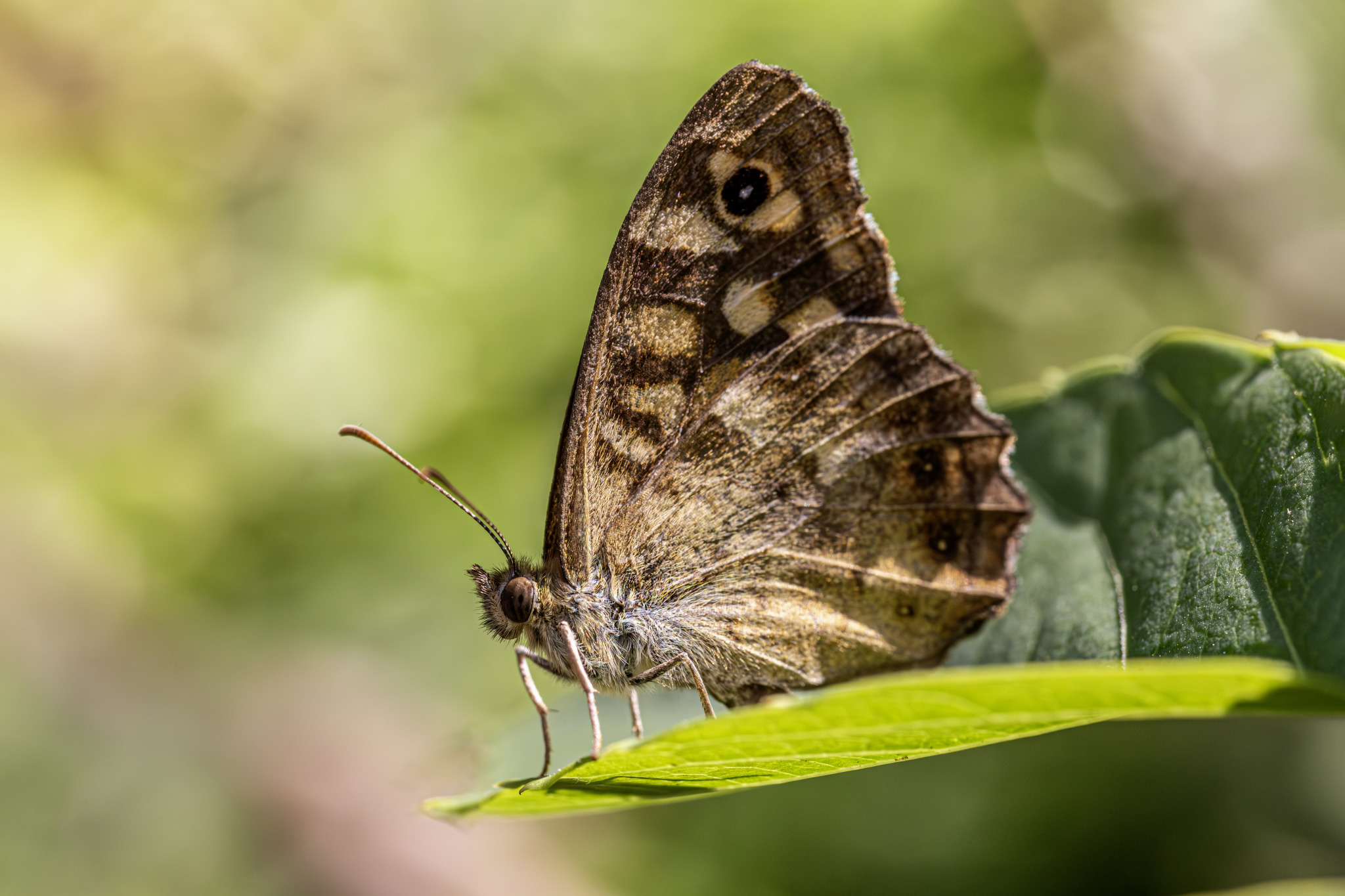The Speckled Wood (Pararge aegeria) is a butterfly found primarily in Europe and parts of North Africa and Asia. Known for its distinctive speckled wings and woodland habitat, it is a common sight in many regions and is well-loved by butterfly enthusiasts.
Description
- Appearance:
- Wingspan: Approximately 4-5 centimeters (1.6-2 inches).
- Coloration: The wings are brown with cream or yellow spots. The forewings have a series of pale, eye-like spots with a dark center, while the hindwings have fewer but similar spots. The underside of the wings is mottled brown, aiding in camouflage.
- Sexual Dimorphism: Males and females look similar, but males typically have a slightly darker, richer color and more pronounced spots.
Habitat
- Distribution: The Speckled Wood is found throughout Europe, extending into North Africa and across into Asia, including parts of the Middle East.
- Preferred Environment: As its name suggests, this butterfly favors woodlands, especially areas with dappled sunlight. It can also be found in gardens, hedgerows, and grasslands with scattered trees or shrubs.
Behavior and Ecology
- Diet:
- Caterpillars: The larvae feed on a variety of grasses, including false brome (Brachypodium sylvaticum), Yorkshire fog (Holcus lanatus), and cock’s-foot (Dactylis glomerata).
- Adults: Adult Speckled Woods feed on honeydew produced by aphids and occasionally on nectar from flowers such as bramble (Rubus fruticosus) and ivy (Hedera helix).
- Behavior:
- Territorial: Males are territorial and often perch in sunny spots within woodlands. They will chase away intruders, including other males.
- Flight Pattern: The flight of the Speckled Wood is characteristic, with a combination of flitting and gliding, often through dappled sunlight.
- Reproduction:
- Mating: Males and females engage in a courtship flight before mating. After mating, females lay eggs singly on grass blades.
- Life Cycle: The species can have multiple generations per year, depending on the climate. In warmer regions, up to three generations can occur annually.
Conservation
- Status: The Speckled Wood is not considered threatened and is common in much of its range.
- Conservation Efforts: Conservation focuses on maintaining woodland habitats and ensuring a diversity of grasses for larval food. Promoting natural forest management and reducing pesticide use are also important.
Observing Speckled Woods
- Best Times: They can be observed from spring through autumn, with peak activity in late spring and summer.
- Watching Tips: Look for them in dappled sunlight within woodlands or along woodland edges. Males are often seen basking on leaves or patrolling sunny spots.
Interesting Facts
- Sunlight Preferences: Speckled Woods prefer dappled sunlight, which makes woodland edges and clearings ideal habitats.
- Variations: There are slight regional variations in the appearance of Speckled Woods, with those in southern Europe often having more orange hues in their spots.
- Overwintering: Depending on the climate, the species can overwinter as a larva or pupa, allowing it to adapt to various environmental conditions.
Summary
The Speckled Wood (Pararge aegeria) is a common and widely distributed butterfly known for its beautiful, speckled wings and preference for woodland habitats. Its distinctive appearance and behavior make it a favorite among butterfly watchers. By maintaining and protecting woodland environments and ensuring the presence of grassy areas for larval feeding, the continued prosperity of this delightful butterfly can be supported.ness of natural habitats.tterflies.
Views: 406
Subscribe to the newsletter:
